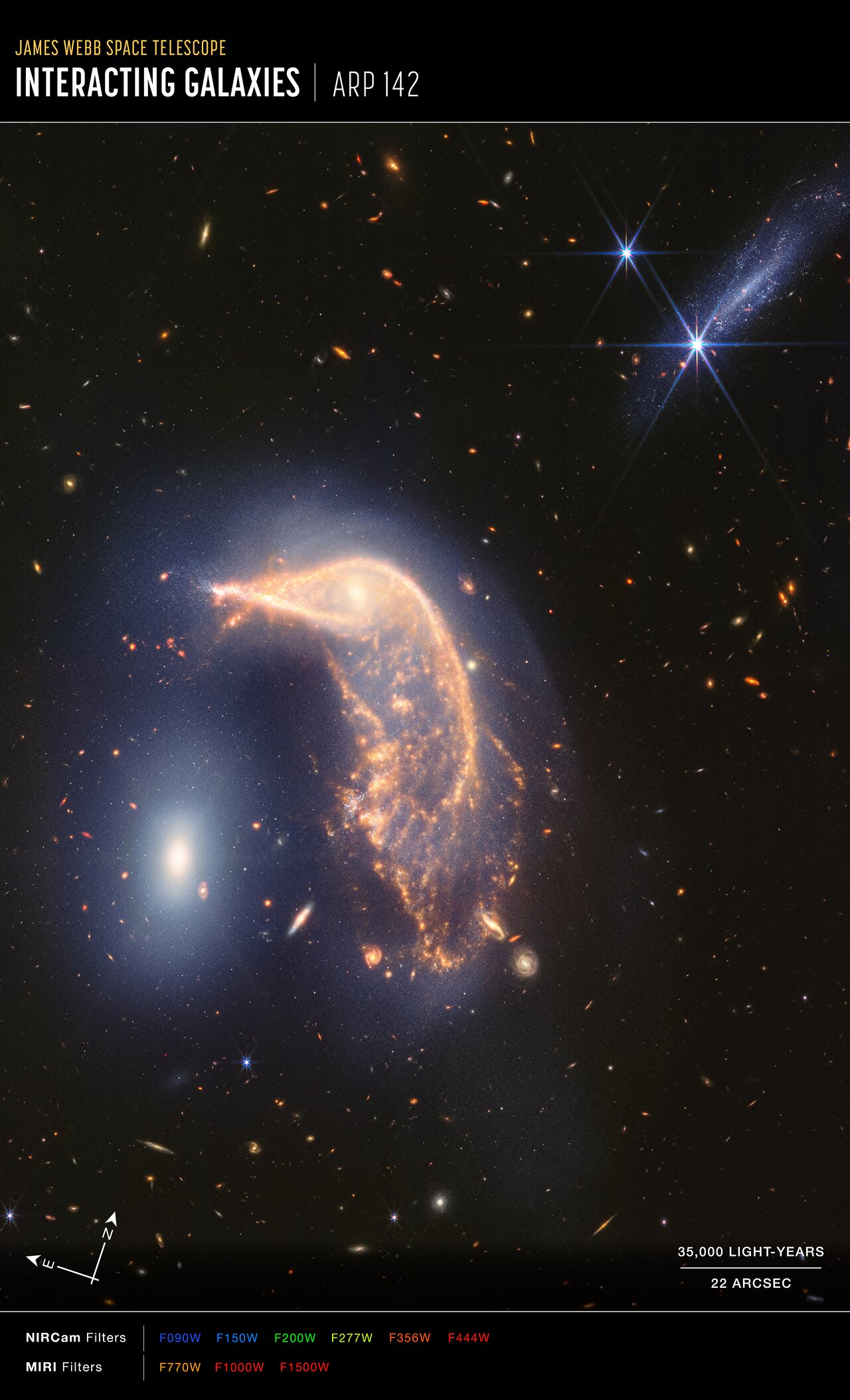Interacting galaxies Arp 142 (NIRCam and MIRI image, annotated)
This image of interacting galaxies Arp 142, captured by the James Webb Space Telescope’s NIRCam (Near-InfraRed Camera) and MIRI (Mid-InfraRed Instrument), shows compass arrows, a scale bar, and a colour key for reference.
The north and east compass arrows show the orientation of the image on the sky. Note that the relationship between north and east on the sky (as seen from below) is flipped relative to direction arrows on a map of the ground (as seen from above).
The scale bar is labelled in light-years, which is the distance that light travels in one Earth-year. (It takes three years for light to travel a distance equal to the length of the scale bar.) One light-year is equal to about 9.46 trillion kilometres.
The scale bar is also labelled in arcseconds, which is a measure of angular distance on the sky. One arcsecond is equal to an angular measurement of 1/3600 of one degree. There are 60 arcminutes in a degree and 60 arcseconds in an arcminute. (The full Moon has an angular diameter of about 30 arcminutes.) The actual size of an object that covers one arcsecond on the sky depends on its distance from the telescope.
This image shows invisible near- and mid-infrared wavelengths of light that have been translated into visible-light colours. The colour key shows which NIRCam and MIRI filters were used when collecting the light. The name of each filter is the visible light colour used to represent the infrared light that passes through that filter.
[Image description: Two interacting galaxies known as Arp 142. At left is NGC 2937, nicknamed the Egg for its appearance. At right is NGC 2936, nicknamed the Penguin for its appearance. The latter’s beak-like region points toward and above the Egg.]
Credit:NASA, ESA, CSA, STScI
About the Image
| Id: | weic2420d | |
|---|---|---|
| Type: | Chart | |
| Release date: | 12 July 2024, 16:00 | |
| Related releases: | weic2420 | |
| Size: | 4280 x 7049 px | |


